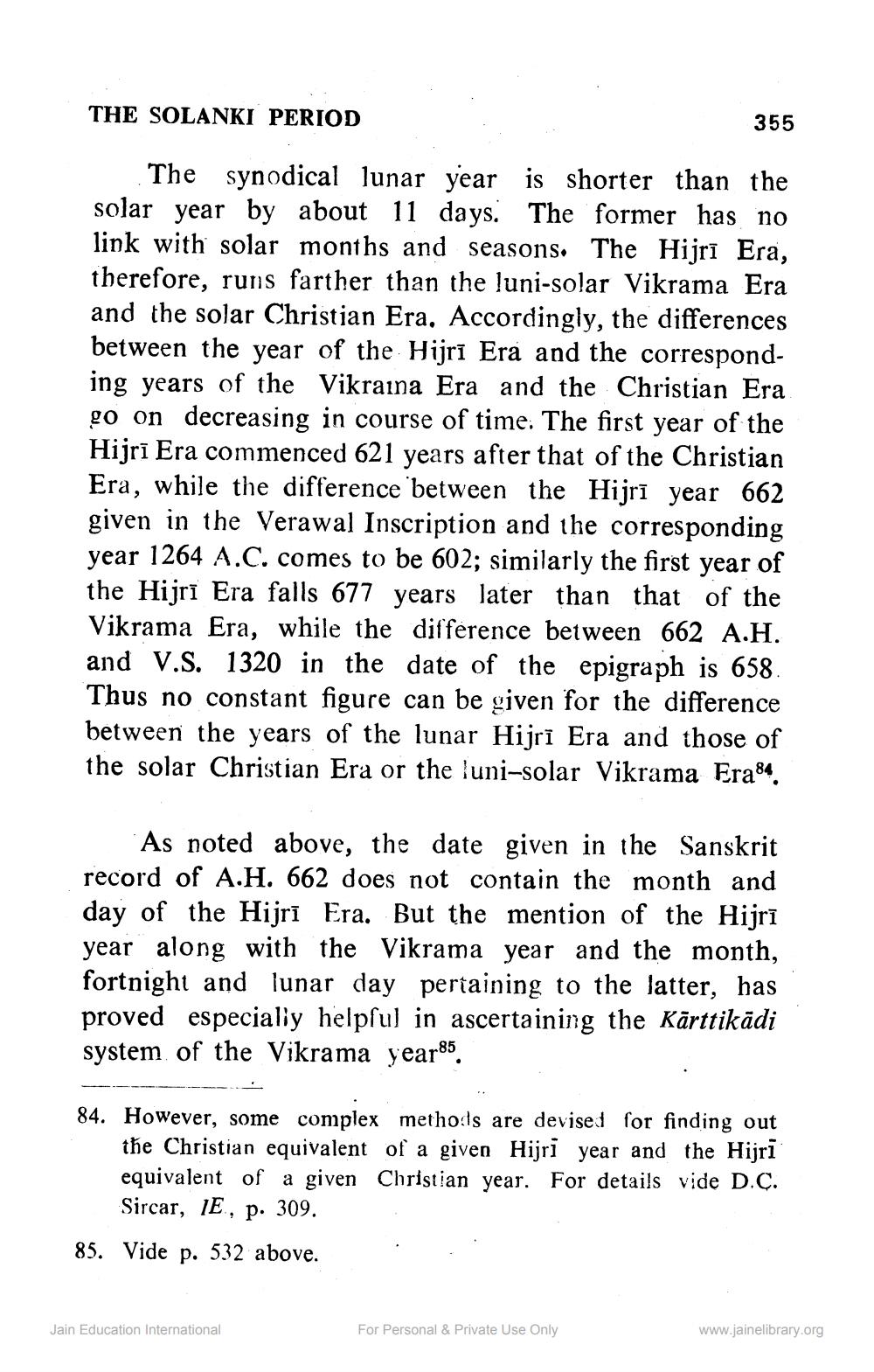________________
THE SOLANKI PERIOD
355
The synodical lunar year is shorter than the solar year by about 11 days. The former has no link with solar months and seasons. The Hijrī Era, therefore, runs farther than the luni-solar Vikrama Era and the solar Christian Era, Accordingly, the differences between the year of the Hijrī Era and the corresponding years of the Vikraina Era and the Christian Era go on decreasing in course of time. The first year of the Hijrī Era commenced 621 years after that of the Christian Era, while the difference between the Hijrī year 662 given in the Verawal Inscription and the corresponding year 1264 A.C. comes to be 602; similarly the first year of the Hijrī Era falls 677 years later than that of the Vikrama Era, while the difference between 662 A.H. and V.S. 1320 in the date of the epigraph is 658. Thus no constant figure can be given for the difference between the years of the lunar Hijrī Era and those of the solar Christian Era or the luni-solar Vikrama Era84,
As noted above, the date given in the Sanskrit record of A.H. 662 does not contain the month and day of the Hijrī Era. But the mention of the Hijrī year along with the Vikrama year and the month, fortnight and lunar day pertaining to the latter, has proved especially helpful in ascertaining the Kārttikādi system of the Vikrama year85.
84. However, some complex metho:'s are devised for finding out
the Christian equivalent of a given Hijri year and the Hijrī equivalent of a given Christian year. For details vide D.C.
Sircar, IE, p. 309. 85. Vide p. 532 above.
Jain Education International
For Personal & Private Use Only
www.jainelibrary.org




